By Diplomacy Journal Lee Jon-young
Choi Sang-hoon joined Yoo Young-soo's workshop in Haengdang-dong, Seoul, as an apprentice in 1966 at the tender age of 13, and has spent nearly 60 years of his life with najeon lacquerware (laquerware inlaid with mother-of-pearl).
In 1969, after attending Master Yoo Young-soo's workshop, he moved to the workshop of Seoul Intangible Cultural Property Min Jong-tae and learned various techniques from him. Of course, he learned the general field of the complex najeon lacquer technique from Min Jong-tae, but he also learned najeon and lacquer techniques from Lee Sang-ho, who worked as a factory foreman in Min Jong-tae's workshop, and the cut off technique from Shim Boo-gil, who was an important intangible cultural asset No. 54 at the time.
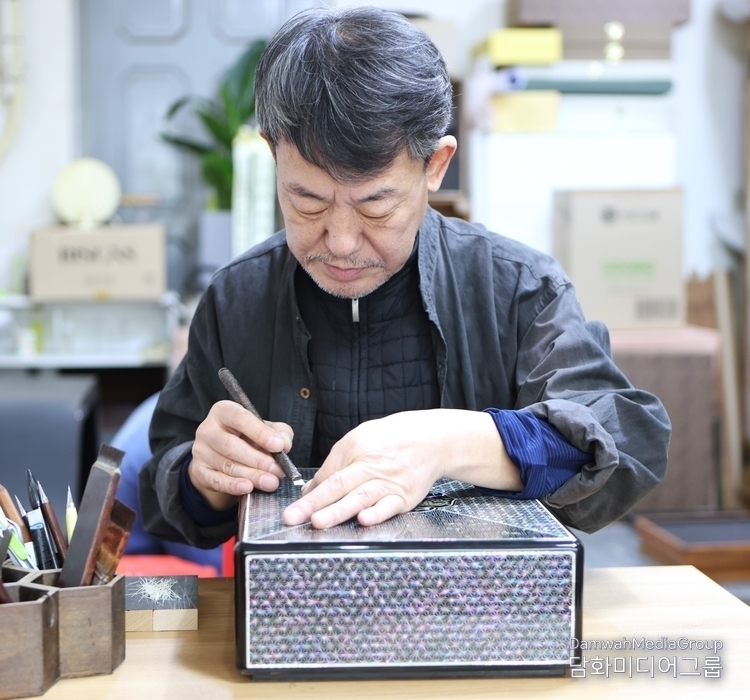
These were recognized as the roots and seeds of Choi Sang-hoon's ability to become the best in Korean najeon lacquerware. In 1989, he became independent and ran his own workshop.
Choi has earned a reputation as a master craftsman with the best skills among Korean najeon craftsmen, including stitching, breaking, inlaying, tatting, bokchae, plaque, engraving, and attachment techniques, and in 2023, he was recognized by the government as a "National Intangible Heritage Najeon Craftsman".
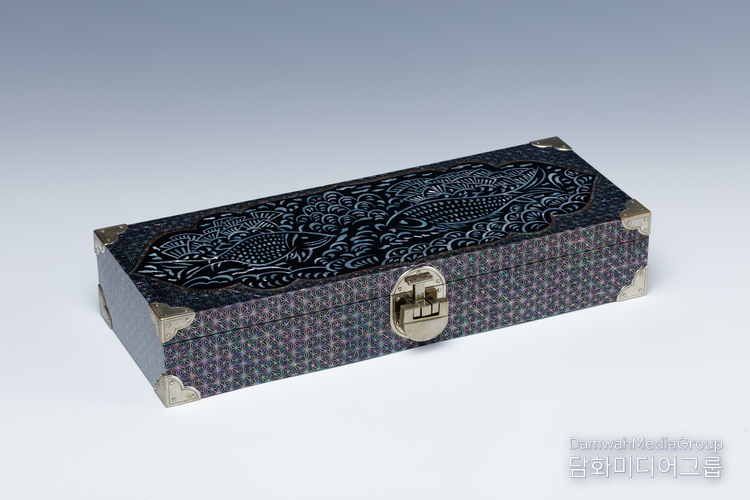
Looking at the history of lacquerware and najeon in Korea, from the Nakrang period to the production of Goguryeo murals, it was made using coloring and painting techniques by adding color to lacquer, and through the Three Kingdoms period, Silla, Unified Silla, and the Goryeo period. In the Goryeo Dynasty, mother-of-pearl lacquerware blossomed with the inlaying of mother-of-pearl. And the level of Korean najeon lacquerware technology and works can be said to be the best in the world.
Choi Sang-hoon first entered and won the 15th Korea Traditional Crafts Competition in 1990, won the Grand Prize at the Seoul Culture and Tourism Products Exhibition in 1998, won the Prime Minister's Award at the 32nd National Crafts Competition in 2002, and won more than 70 awards at various competitions until 2013, making him the most awarded Korean lacquerware craftsman and artist.
In February 2024, six of his students, Nam Jin-woo, Shim Ji-hye, Ahn So-ra, Lee Se-eun, Jeong Eun-sook, and Bae Young-dal, are currently learning the art of najeon lacquerware from him, and he is proud of them. If he had one regret, it would be that his parents passed away after a long illness, so it is very unfortunate that he is not able to support family financially.
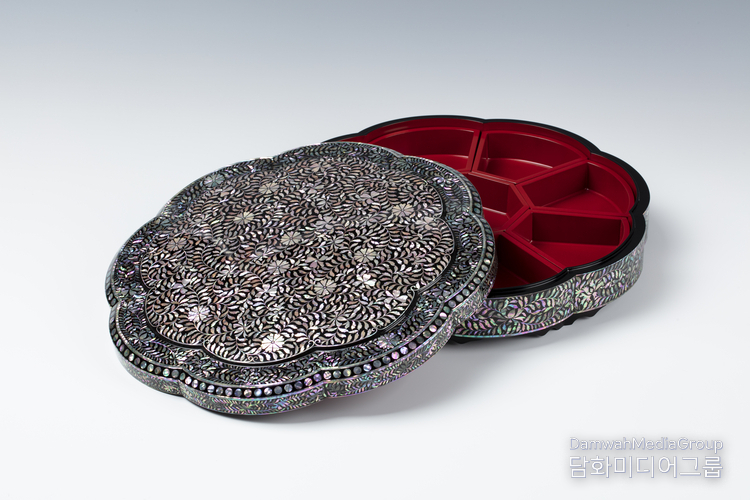
The legacy of Korean najeon master artisan Choi Sang-hoon
Najeon is a traditional Korean aesthetic technique that uses mother-of-pearl from the inner blood layer of some shells on lacquered objects. It is known for its brilliance and timelessness and has been around for centuries. It shines and sparkles in the light, and its color shimmers in the light.
This is the beauty of Najeon lacquerware, a traditional Korean craft that brings together mother-of-pearl inlay and lacquerware. It has been practiced in Korea for centuries. Choi has spent more than half a century creating traditional najeon lacquerware. It takes a great deal of patience to create such an intricate craft. It's made of lacquer and glutinous rice paste, which is then covered with hochil.
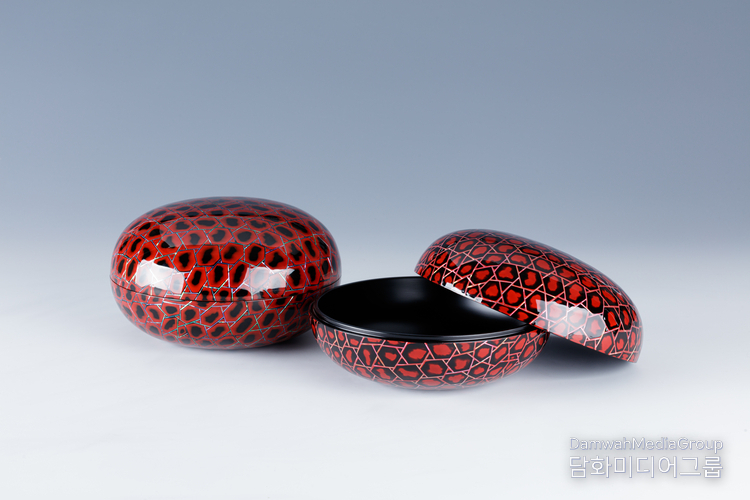
It begins by filling in the warps and gaps in the wood. Once it's dry, it's outlined (sunbo). Then, a natural glue is carefully applied so that the mother-of-pearl adheres to the surface. And here's where the real magic begins. The mother-of-pearl is cut like a thread using a geodu according to its shape. It requires a delicate touch and precise cutting to ensure the best quality.
It can take weeks to months to create a piece, but it's rare to find authentic mother-of-pearl crafts in mass production. There's nothing necessarily wrong with deviating from traditional methods; we're just jumping on the bandwagon. Crafts change as things modernize, and there are those, like myself, who maintain tradition.
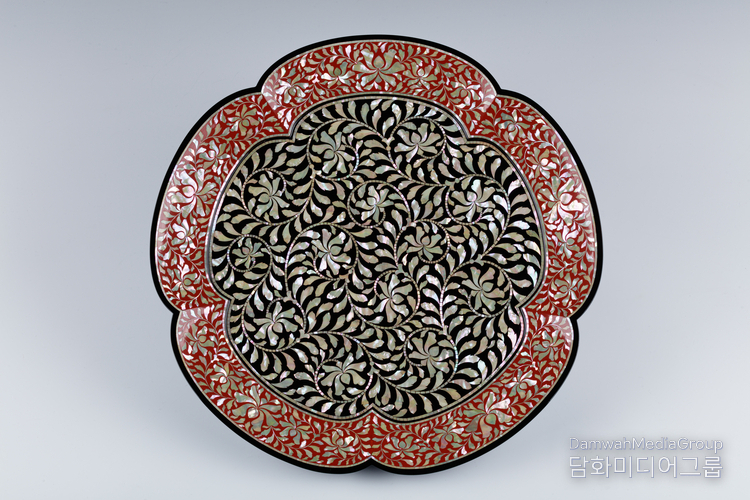
Nevertheless, as a designated craftsman, I feel obligated to pass on the skills to the next generation. There are students (apprentices) who want to carry on the legacy from their predecessors. It's a call of duty, a duty given to me by the country to maintain the tradition. Many people don't want to learn this craft because you can't use it to make a lot of money. But I'm lucky, I have students, and I will pass on to them all the skills and techniques I have.
That's the hope. As an artisan who preserves the spirit of the Najon craft, the real magic of it is in creating art. Painters draw with paint. And I am a painter who draws picture with mother-of-pearl. We breathe life into discarded shells and sumac. All the materials in Najeon lacquerware come from nature. It's a way for us to reference something from the very beginning.
Choi Sang-hoon, National Intangible Cultural Property Najeon artisan
1954 Born in Seoul
1969 Studied under Mr. Min Jong-tae
1989 Opened his own workshop
2023 Designated as a National Intangible Cultural Property
Awards and honors
1990~2015 Korea National Traditional Crafts Competition Award and Honorable Mention (17 times)
1998 Seoul Culture and Tourism Voucher Grand Prize, Gold Award, Bronze Award
2002 Prime Minister's Award at the National Crafts Festival
2011 Namwon Woodworking Competition, Gold Medal, Bronze Medal
2012 Grand Prize (Prime Minister's Award), Gold, Bronze awards at Korea Water Lacquer Crafts Competition
2012 KDB Traditional Crafts Industry Exhibition Gold Award
Exhibitions
2003~2008 Special Exhibition of Important Intangible Cultural Properties, Master Craftsmen, and Masters
2005~2007 Five thousand years of mystery (Najeon lacquerware)
2009 Najeon lacquer and national music (New York)
2010 Korean Najeon and Lacquerware (National Museum of Rome, Italy)
2010 Korean Najeon Lacquerware, Volume 21 (COEX)
2010~2011 Mystery of a Thousand Years, Najeon Lacquerware Exhibition (New York)
2011 Flower Lacquer Exhibition (Embassy of the Republic of Korea in Japan, Korean Cultural Center)
2014 Korean Najeon Lacquerware: 33 Contemporary Artists (Korea Najeon Lacquerware Museum)
2015 Beopgo Changshin of Korean Crafts (Milan, Italy)
2017 Displayed at Basel world, Ivan Yarta Collaboration Watch (Switzerland)






